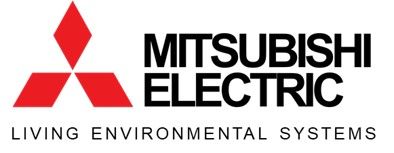Want to create interactive content? It’s easy in Genially!
FTC7 Wiring Guide
DEP | MITSUBISHI ELECTRIC EUROPE | UK
Created on December 3, 2024
Start designing with a free template
Discover more than 1500 professional designs like these:
View
Practical Timeline
View
Timeline video mobile
View
Timeline Lines Mobile
View
Major Religions Timeline
View
Timeline Flipcard
View
Timeline video
View
History Timeline
Transcript
Ecodan FTC7 Wiring Guide
Step 3
Setting DIP Switches
Step 5
Configuring Outputs
Step 1
Circuit Breakers & Wire Sizes
Step 2
Power Supply
Step 4
Configuring Inputs
Step 6
Commissioning The System
Selecting the correct circuit breakers and wire size
Step 1)
Back to timeline
Step 2)
Wiring Option 1 – FTC Powered by the outdoor unit
The biggest advantage of option 1, is it reduces the chances of getting an E6 error as both units will power on and off together.
NOTE: Power supply polarity to the outdoor unit must be correct and to current wiring regulations
Wiring Option 1 – FTC Powered by the outdoor unit
Step 2)
NOTE: Connections shown here are for the outdoor unit
Step 2)
Wiring Option 1 – FTC Powered by the outdoor unit
Connecting power supply to the indoor unit
TB1
TB2
Plugs will be supplied like this from factory
Wiring Option 1 - Power from heat pump
Wiring Option 2 - Independent power supply
Step 2)
NOTE: Connection S1 is not used for wiring option 2 - Independent power supply
The biggest advantage of option 2, is it ensures there is still power available to the FTC for operating the immersion heater in emergency mode. Emergency mode can be activated by turning on SW4-5 on the FTC.
Wiring Option 2 - Independent power supply
Step 2)
Connecting power supply to indoor unit
TB1
TB2
Back to timeline
Swap Plugs on CN01 connection to this
Wiring Option 2 - Independent Supply
Setting DIP Switches on the FTC (Indoor Unit)
Step 3)
Turn ON relevant DIP Switches as shown below, all remaining DIPS to be OFF.
Hot Water Mode
SW1-3 = Domestic Hot Water Mode Active SW1-4 = FTC to control Immersion Heater SW3-7 = Mitsubishi Electric Pre-plumbed Cylinder In Use. SW3-7 OFF = 3rd Party Coil Cylinder in use (only when SW1-3 is ON).
Essential Settings
SW1-7 MUST BE ON = Monobloc Heat Pump In Use SW2-8 MUST BE ON = Flow Sensor In Use
Heating Controls
SW1-8 = Mitsubishi Electric Wireless Room Stat(s) In Use. (Maximum of 8) SW5-2 = Auto Adaption Mode Active (Only compatible with Mitsubishi Electric wireless room stats)
SW2-1 = 3rd-Party Control for Heating Zone 1 Connected via IN1 SW3-1 = 3rd-Party Control for Heating Zone 2 Connected via IN6
All inputs MUST be Volt-free Or Connected via Volt-free Relay
Heating Mode
2x Heating zones with the same flow temperature = SW3-5 & SW3-6
Single Heating Zone = SW3-5
OR
OR
2x Heating zones with different flow temperatures (FTC controlling mixing valve) = SW3-5, SW2-6 & SW2-7
If using FTC7 with R32 Ecodan unit, turn ON SW6-1
Step 4)
Configuring Inputs - Essential Components
Component / Connection Main Remote Controller / TB5 - Screw Connection Flow Sensor / CN1A - White Plug Hot Water Thermistor / CNW5 - Blue Plug Primary Flow & Return Thermistors / CNW12 - Red Plug
Click Image to enlarge
Configuring Inputs - Mitsubishi Electric Controls
Step 4)
Mitsubishi Electric receiver for wireless thermostat goes into Red Plug Connection CNRF
MELCloud Wi-Fi interface goes into White Plug Connection CN105
Configuring Inputs - 3rd Party Heating Controls
Step 4)
All inputs MUST be Volt-free Or Connected via Volt-free Relay
Click Image to enlarge
Configuring Inputs: Additional thermistors for 2x heating zones with different flow temperatures
Step 4)
Click to enlarge image
Back to timeline
Configuring Outputs: 1x Heating Zone
Step 5)
Primary Pump OUT1/TBO.1: 1+2
Heating Zone 1 Pump OUT2/TBO.1: 3+4
Note: Connections shown are for standalone applications. Mitsubishi Electric pre-plumbed cylinders will use plug connections CNP1 for the primary pump and CNV1 for the diverter valve.
Full Diverter Valve OUT4/TBO.2: 7,8+9
For alternative diverter valve types, please see install manual
Click Image to enlarge
Configuring Outputs: 2x Heating zones with same flow temperatures
Step 5)
Primary Pump OUT1/TBO.1: 1+2
Heating Zone 2 Pump OUT3/TBO.1: 5+6
Note: Connections shown are for standalone applications. Mitsubishi Electric pre-plumbed cylinders will use plug connections CNP1 for the primary pump and CNV1 for the diverter valve.
Full Diverter Valve OUT4/TBO.2: 7,8+9
Click Image to enlarge
For alternative diverter valve types, please see install manual
Heating Zone 1 Pump OUT13/TBO.1: 3+4
Configuring Outputs: 2x Heating zones with different flow temperatures
Step 5)
Back to timeline
Primary Pump OUT1/TBO.1: 1+2
Heating Zone 1 Pump OUT2/TBO.1: 3+4
Heating Zone 2 Pump OUT3/TBO.1: 5+6
Please Note: Lower temperature zone must be on Zone 2, and additional temperature sensors are required for heating zones 1&2. Description: Flow & Return Temperature Sensors 5m Cable Model Name: PAC-TH011-E. Product Reference Code: 258695
Mixing Valve OUT5/TBO.2: 1+2+3
Full Diverter Valve OUT4/TBO.2: 7,8+9
For alternative diverter valve types, please see install manual
Click Image to enlarge
Commissioning The System
Step 6)
Back to timeline
Once steps 1-6 have been completed, you are ready to power on the system and commission the Main Remote Controller
Click here to see video on Intitial setup wizard
Scan the QR code or visit: https://les.mitsubishielectric.co.uk/ecodan-installer
